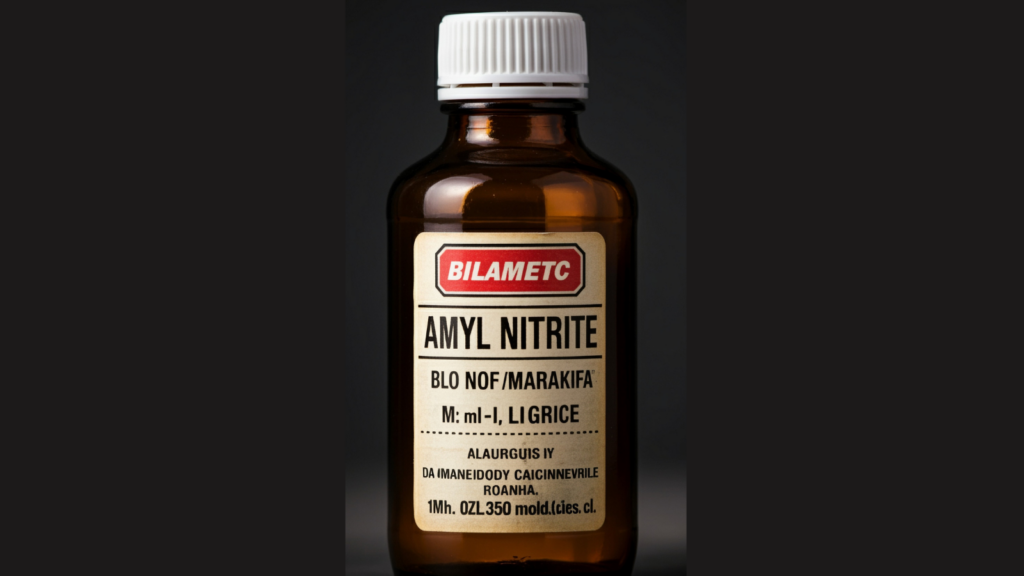Poppers, also known as amyl nitrite, are a fast-acting inhalant that delivers a quick high. Originally developed to relieve chest pain, they found widespread use in the LGBTQ community in the 1960s thanks to their muscle-relaxing properties, which can make anal sex more comfortable. Today, poppers remain closely associated with LGBTQ culture, but their use comes with potential risks, especially for those in recovery.
This article dives into the risks poppers pose to sobriety and why they’ve remained popular within the LGBTQ community
Party drug rehab in Los Angeles: Call La Fuente Hollywood Treatment Center at 888.903.9898.
What Are Poppers?
Poppers, or amyl nitrite, are liquid chemical compounds that produce an instant high when the vapors are inhaled. They belong to a group of compounds known as alkyl nitrites, which dilate the blood vessels. Users report euphoria, muscle relaxation, and heightened sensory perception after use.
While nitrites have legitimate medical uses in treating heart conditions, poppers exist in a legal gray area. Though not technically illegal to sell, they can’t be marketed for human consumption. Manufacturers often label them as leather cleaners, room deodorizers, or nail polish removers to bypass regulations.
Other Names for Poppers
- Rush
- Bold
- Jungle Juice
- Liquid Gold
- Purple Haze
- Buzz
- Snappers
- Locker Room
Poppers Effects and Health Risks
Poppers take effect rapidly, usually within seconds of inhaling the vapors. The high fades as quickly as it begins, typically lasting just a few minutes.
Common Effects:
- Feelings of euphoria
- Muscle relaxation
- Increased sex drive
- Increased sensual awareness
- Heightened sense of confidence
- Lowered inhibitions
Common Side Effects:
- Dizziness and lightheadedness
- Rapid heartbeat
- Facial flushing
- Headaches
- Nausea
- Vision problems (including sensitivity to light)
- Impaired judgment
- Disorientation
Health Risks:
While many people consider poppers to be safe, they carry a range of harmful side effects, including:
- Rashes around the eyes, mouth, or nose
- Vision loss due to vapor exposure (maculopathy)
- Impaired judgment, which can lead to risky sexual behavior and associated dangers
- Brain damage, particularly affecting learning and memory
- A weakened immune system
- Increased risk of cancers linked to viral infections
- Methemoglobinemia, a potentially life-threatening blood disorder that reduces the ability of red blood cells to carry oxygen
Are Poppers Addictive?
Poppers aren’t addictive in the same way as drugs like cocaine, fentanyl, or heroin. Regular popper use doesn’t cause cravings or physical dependence. However, frequent users may develop a tolerance, causing them to use poppers more frequently or in higher doses to achieve the same effects.
Poppers and Risks to Sobriety
While poppers aren’t addictive in the traditional sense, they can still pose a risk to sobriety. Some argue that poppers don’t trigger cravings or destructive behaviors, while others believe their mood-altering effects are incompatible with true sobriety.
For example, poppers can lower inhibitions and trigger reminders of past drug use, especially for those who have used them with stimulants like meth. The intoxicating sensations can reawaken old habits, particularly the connection between drugs and sex, which may spark cravings and lead to relapse.
Even if poppers don’t directly lead to drug use, many agree that the greater risk lies in the secrecy, bargaining, and shame that come with their use. These behaviors can be destructive for anyone working on long-term recovery.
Poppers in the LGBTQ Community
The connection between poppers and the gay community likely began in the 1960s. Although the exact timeline is unclear, pharmacies started noticing that healthy young men were frequently requesting amyl nitrite, a drug originally used to treat chest pain. Its ability to relax the sphincter muscles and make anal sex more comfortable led to its popularity in gay circles.
The use of poppers persisted throughout the late 20th century and into the 21st. A 2010 study found that popper use remained steady among “sexual minority men” between 2002 and 2007, even as other recreational drugs like ecstasy and ketamine saw declines.
Poppers have become a notable part of LGBTQ culture, with references appearing in various forms of media. For example:
- British singer-songwriter Charli XCX held a bottle of Rush brand poppers and declared “gay rights” in a 2019 tweet.
- Australian singer-songwriter Troye Sivan’s song “Rush” is a nod to Rush brand poppers, and he mentioned sniffing poppers before his album photoshoot.
- Poppers frequently appear in the TV show Queer as Folk.
- The book Deep Sniff: A History of Poppers and Queer Futures explores the history of poppers within the LGBTQ community.
Party Drug Rehab at La Fuente Hollywood Treatment Center
Poppers are part of a broader category of party drugs, which includes substances like GHB, MDMA, and ketamine. While their composition differs, they produce similar effects, such as heightened energy, lowered inhibitions, and an elevated mood. Since party settings are a common space for LGBTQ socializing, our community is more vulnerable to the risks of substance abuse with these drugs.
If you or a loved one in the LGBTQ community needs help with party drug addiction in Southern California, La Fuente Hollywood offers specialized treatment backed by more than a decade of experience. Contact us today at 888.903.9898.




